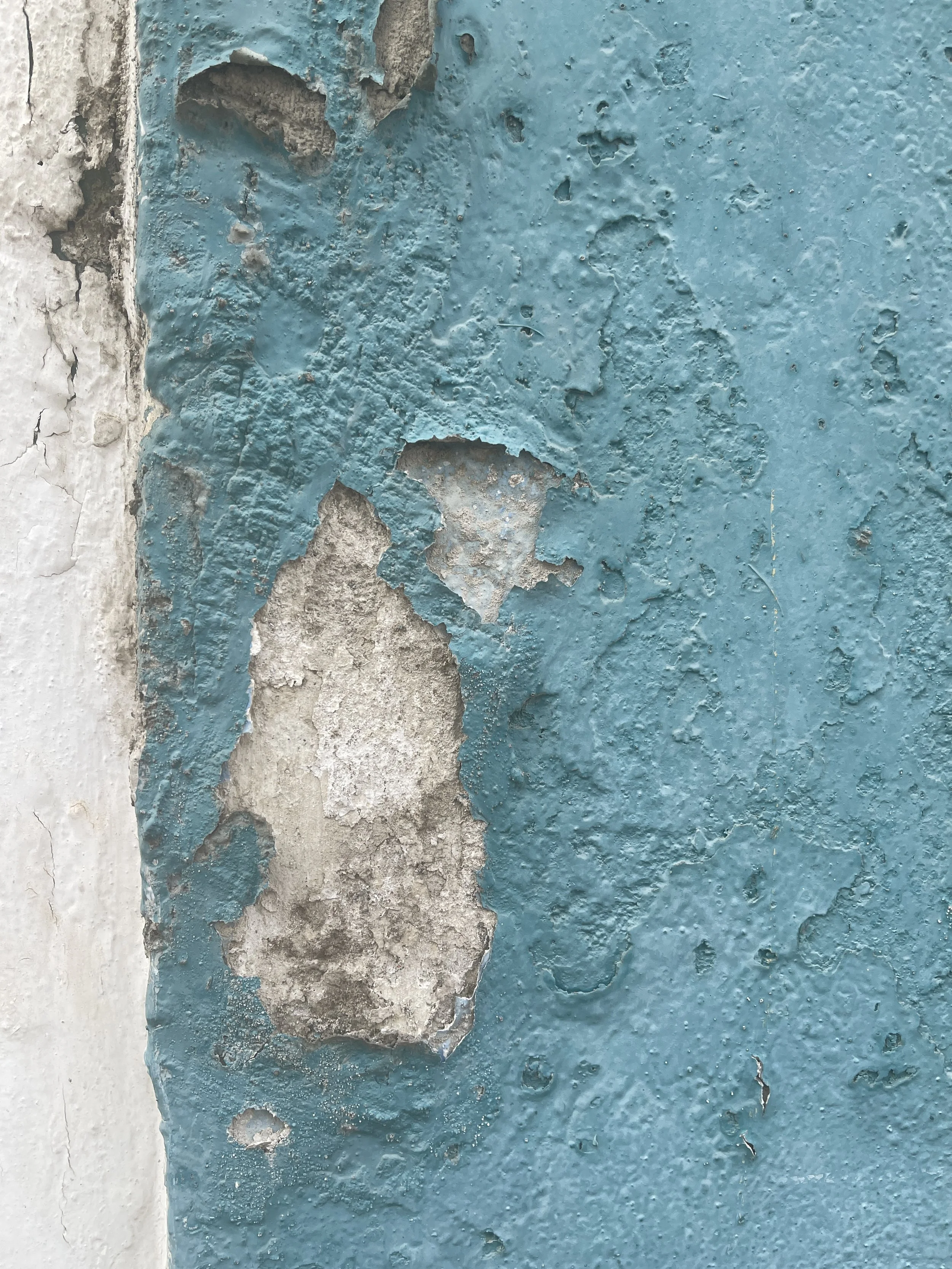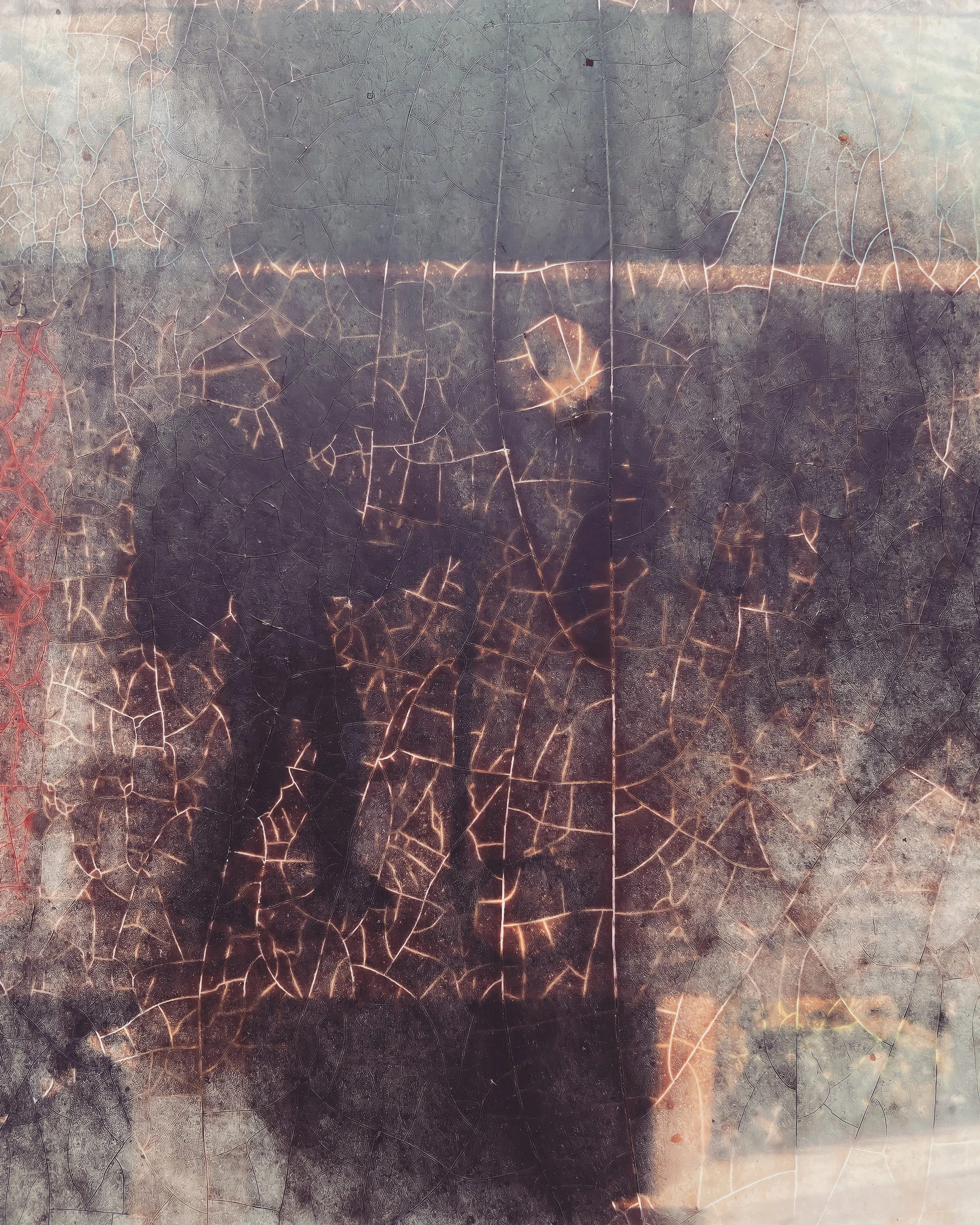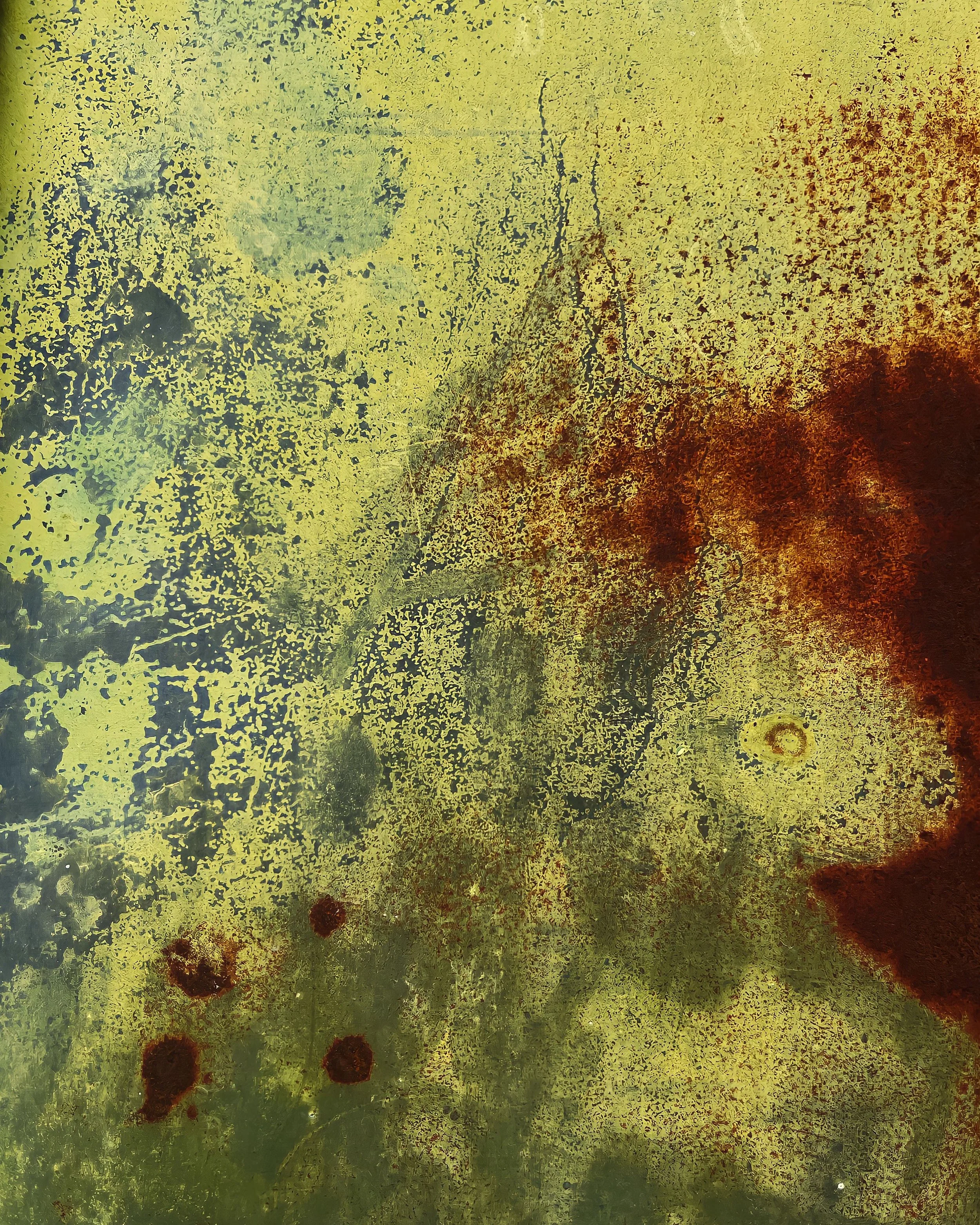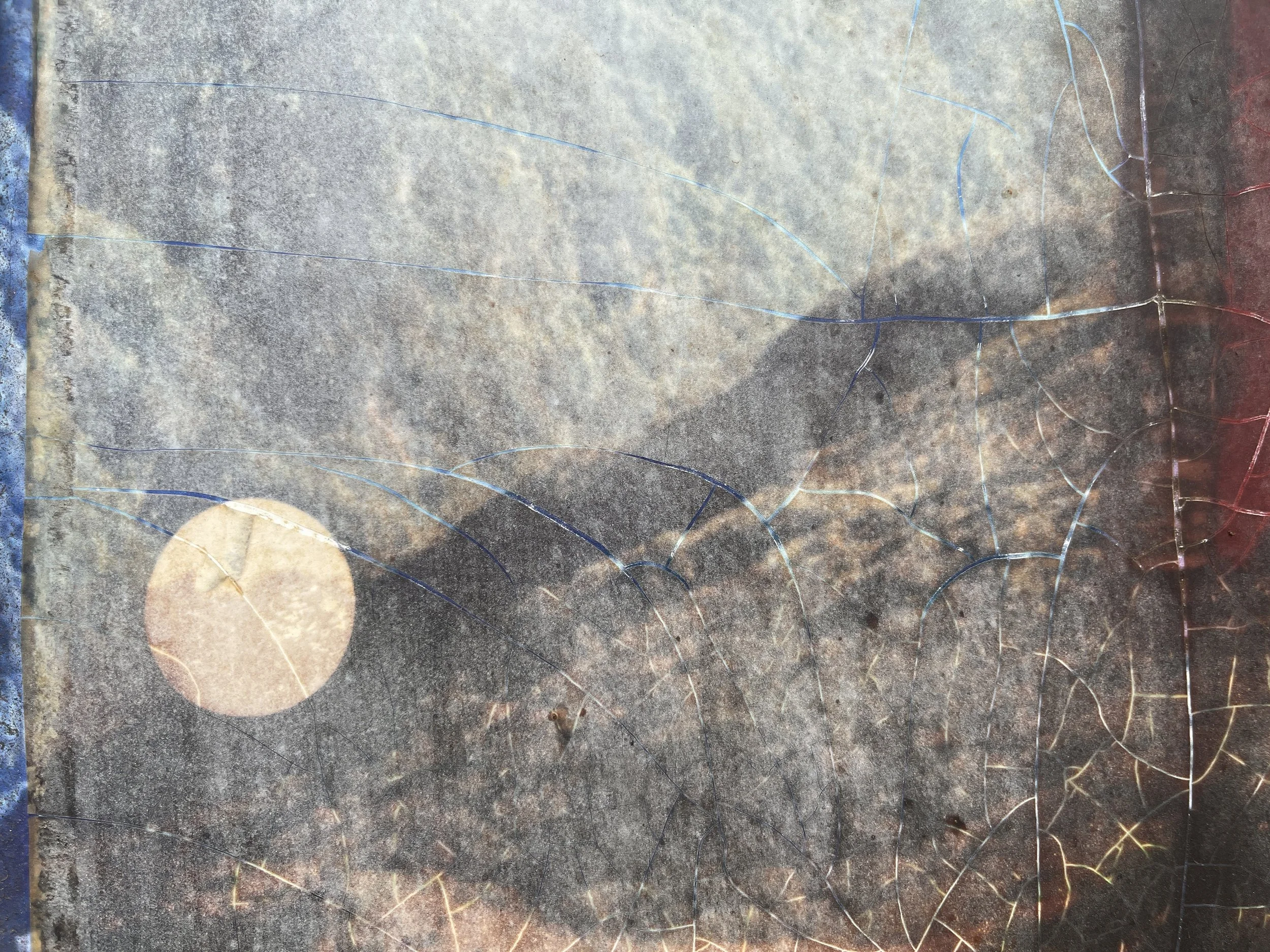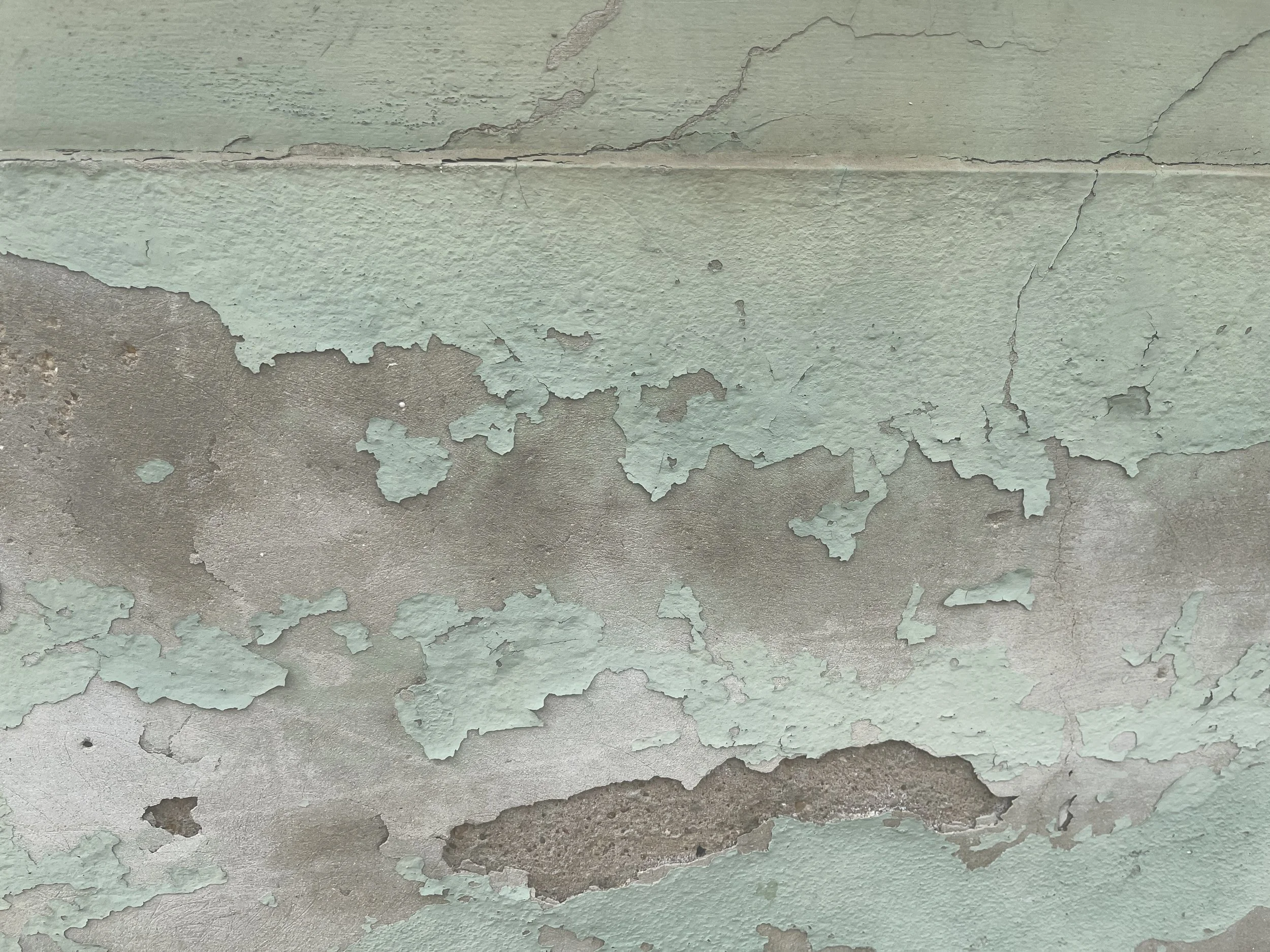The Wall as Surface, Memory, and Temporal Field
In this series, the wall is approached not as an inert boundary but as an active surface — a living archive in which material, time, and environment converge. The works examine how the slow processes of weathering, fading, and erosion become aesthetic events in themselves, transforming utilitarian architecture into an accidental form of abstraction. The peeling layers of paint and pigment perform a kind of visual archaeology, revealing traces of human presence and erasure. In this sense, the wall operates as a palimpsest — a surface repeatedly inscribed and effaced, where each mark carries the residue of previous gestures.
Drawing upon the aesthetics of wabi-sabi and the poetics of entropy, the images foreground impermanence as both subject and method. They invite the viewer to engage with the beauty inherent in decline and to consider decay not as a failure of preservation but as a form of transformation. The marks left by time, weather, and neglect are read as inscriptions of non-human agency, suggesting that material surfaces possess their own capacity to record and to remember.
By framing these walls through a lens of close observation, the series destabilises traditional hierarchies between the constructed and the natural, the intentional and the accidental. What emerges is a meditation on temporality — on how environments age, shift, and recompose themselves beyond the control of human design. The work thus situates itself within broader discourses of material culture and phenomenology, proposing that every surface holds within it an invisible history of touch, exposure, and endurance. The decaying wall becomes, ultimately, a metaphor for the persistence of time itself: fragile, layered, and continuously rewriting its own surface.Time alters every surface. In these walls, colour, texture, and erosion become language — a quiet record of transformation, loss, and persistence.

